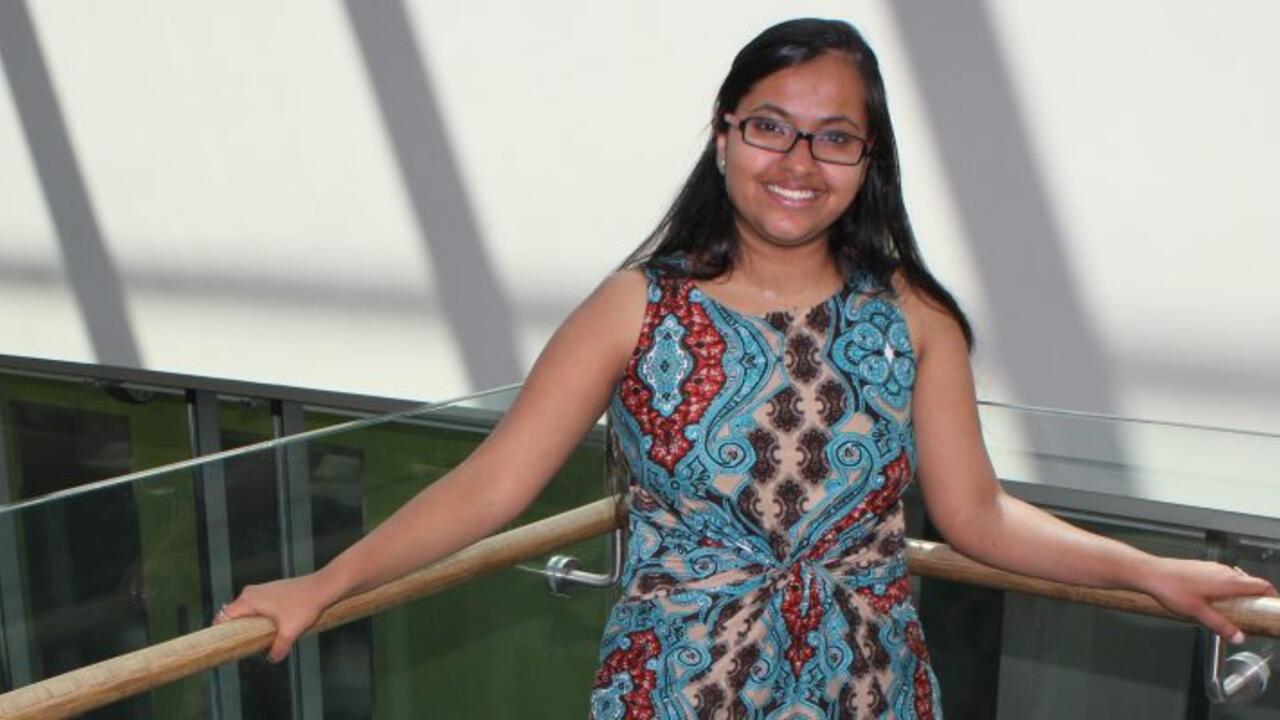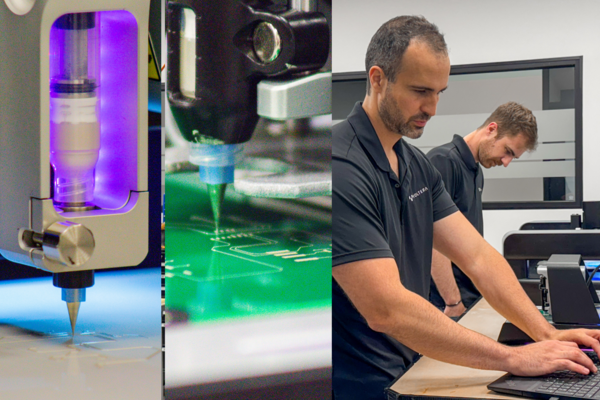
Master’s students explore IT impact in developing world
Mythreyi Sivaraman tackles a research project on Internet connectivity

Mythreyi Sivaraman tackles a research project on Internet connectivity
By Brian Caldwell Faculty of EngineeringMythreyi Sivaraman had no trouble relating when she tackled a research project aimed at improving Internet connectivity in the developing world, especially in times of crisis.
As a girl in her native India, she saw first-hand how poorly prepared people were due to limited communications, both before and after, when a massive tsunami devastated coastal areas in late 2004.
More than a decade later, Sivaraman was working towards a master’s degree in chemical engineering at the University of Waterloo last fall when weeks of rain back home caused deadly flooding in the city of Chennai, where some of her relatives live.
This time, though the disaster still claimed more than 500 lives, she was amazed to follow along via social media as residents used the Internet to connect, communicate and co-ordinate recovery efforts that made a huge difference.
Hungry people found food. The homeless were taken in by strangers with room to spare. Rescuers swam, in some cases, to reach otherwise isolated survivors who had made their whereabouts known.
“It was all over Facebook, all over Twitter,” says Sivaraman. “In such a situation, it was brilliant the way they used it.”
With that example still fresh in her mind, Sivaraman was an enthusiastic student this summer in the master’s-level project management course offered through the Conrad Business, Entrepreneurship and Technology Centre at Waterloo Engineering.
Final marks in the course are based largely on team projects involving various aspects of information technology (IT) as it relates to humanitarian work in the developing world.
A key partner is NetHope, a consortium of non-governmental organizations (NGOs) – including the Red Cross and World Vision – that is dedicated to improving Internet connectivity in poor countries and areas affected by disasters.
Since the course was launched a decade ago, about 300 students have worked on more than 25 projects, primarily doing research and making recommendations to NetHope, which has partnerships with major technology companies including Microsoft and Cisco Systems.
Their work has covered subjects as diverse as lesson planning for teachers in Pakistan, a system to help expose counterfeit medications using text messages and how to establish reliable power sources for computers to access the Internet.
“It’s one thing to get a signal,” says Peter Carr, the management sciences lecturer who started the course. “It’s another thing to ensure people have a reliable electricity supply.”
In recent years, several student projects have examined complex issues around the provision and use of the Internet in refugee camps.
Although it connects displaced people with relatives, delivers educational programs and provides information on countries accepting newcomers, there are also concerns about the Internet being used for online recruitment by terrorists.
“There are all kinds of social and political issues associated with introducing technology in the camps,” says Carr.
Sivaraman and 10 other students on her team produced a 30-page report for NetHope outlining ways to develop stronger, longer-term relationships with both NGOs and Internet providers in developing countries.
Although some of the technology was a little outside her comfort zone as a chemical engineer, the underlying goal – giving more people access to information and, therefore, opportunity via Internet connectivity – perfectly fit her ambition to help make the world a better place.
“Your small suggestion could make a huge difference,” Sivaraman says. “You never know.”
With affordable Internet access throughout the world likely possible within a decade, Carr anticipates an enormous impact – and a steady stream of issues for students in the course to explore.
Included are the implications, both good and bad, for democracy, as well as increasing integration of economic activity the world over.
“More connectivity is going to accelerate that for sure,” Carr says. “I think it’s fair to say globalization is probably unstoppable.”

Read more
Meet five exceptional Waterloo graduate students crossing the convocation stage as Class of 2025 valedictorians

Read more
Waterloo Engineering alum wears her iron ring proudly while building her career in quantum tech in Germany

Read more
Voltera prints electronics making prototyping faster and more affordable — accelerating research to market-ready solutions
Read
Engineering stories
Visit
Waterloo Engineering home
Contact
Waterloo Engineering
The University of Waterloo acknowledges that much of our work takes place on the traditional territory of the Neutral, Anishinaabeg, and Haudenosaunee peoples. Our main campus is situated on the Haldimand Tract, the land granted to the Six Nations that includes six miles on each side of the Grand River. Our active work toward reconciliation takes place across our campuses through research, learning, teaching, and community building, and is co-ordinated within the Office of Indigenous Relations.